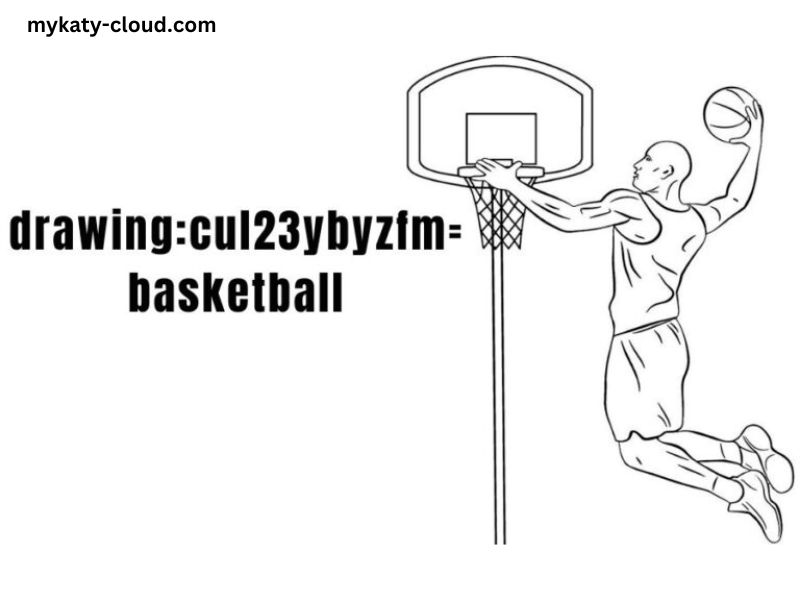Basketball, a sport known for its fast pace and dynamic plays, provides a rich tapestry for artists to explore. Drawing basketball involves not only depicting players and their movements but also conveying the energy, emotions, and culture that surround the game. This article delves into the techniques, challenges, and inspirations behind drawing basketball, illustrating how artists can capture the essence of this beloved sport.
Understanding the Game
To draw basketball effectively, it’s essential to have a solid understanding of the game itself. Basketball is not just about the ball and the hoop; it’s a blend of strategy, athleticism, and teamwork. Here are some fundamental aspects to consider:
1. The Players
Each player on the court has a unique style, stature, and role. Point guards are often smaller and quicker, while centers are usually tall and strong. Recognizing these differences can help artists create more accurate and expressive representations.
2. The Movement
Basketball is characterized by quick cuts, jumps, and various positions. Capturing the fluidity of these movements is crucial. Artists must observe how players pivot, shoot, dribble, and defend. Sketching from live games or video footage can help artists understand the nuances of these motions.
3. The Environment
The basketball court, with its markings, hoop, and audience, adds context to the drawing. The atmosphere—whether it’s a packed arena or a casual street game—can influence the style and mood of the artwork.
Techniques for Drawing Basketball
1. Gesture Drawing
Gesture drawing is an excellent way to capture the essence of movement in basketball. This technique focuses on the basic form and movement of the subject rather than the details. Using quick, loose lines, artists can convey the energy of a player in motion. Setting a timer for short intervals (1-5 minutes) can help artists practice capturing the movement swiftly.
2. Proportions and Anatomy
Understanding human anatomy is vital for realistic representations. Familiarize yourself with the proportions of the human body, particularly how they change during movement. For instance, players often extend their arms and legs, which can alter their proportions in a drawing. Study anatomy and use reference images to improve accuracy.
3. Dynamic Poses
Basketball poses can be dramatic and dynamic. Use reference photos or video clips to analyze key movements, such as shooting, dribbling, or jumping. Focus on the lines of action—imaginary lines that guide the viewer’s eye and enhance the sense of motion. Exaggerating certain features, like the arc of a jump shot or the follow-through of a pass, can add dynamism to your drawings.
4. Shading and Texture
To add depth and realism, utilize shading techniques to reflect light and shadow on the players. Consider the direction of the light source when shading the bodies and the ball. Textures, such as the shine on a basketball or the fabric of a jersey, can also be represented through various techniques like cross-hatching or stippling.
5. Capturing Emotion
Basketball is an emotional sport, filled with passion, excitement, and tension. Capturing facial expressions and body language is key to conveying these emotions. Pay attention to the intensity in players’ eyes, the determination in their stance, and the jubilation or disappointment after a play. These details can transform a simple drawing into a powerful narrative.
Overcoming Challenges in Drawing Basketball
1. Speed of the Game
Basketball is fast-paced, making it challenging to capture moments accurately. To address this, consider the following strategies:
- Practice with Video: Watch game footage and pause at key moments to sketch. This will help you understand the timing and sequence of movements.
- Break Down the Action: Analyze the play in segments. Focus on key positions before and after significant moves, such as a jump shot or a steal.
2. Perspective and Depth
Drawing from a fixed perspective can sometimes flatten the action. Experiment with different viewpoints—high angles, low angles, or side views—to create a sense of depth. Utilize foreshortening techniques to depict players and the ball accurately, especially when they are closer to the viewer.
3. The Complexity of the Game
With multiple players interacting simultaneously, it can be overwhelming to draw a scene. Simplify the composition by focusing on key players or specific moments that tell a story. Use negative space effectively to enhance the focus on your main subjects.
Inspirations for Drawing Basketball
1. Cultural Significance
Basketball is more than just a sport; it’s a cultural phenomenon. It has influenced fashion, music, and art. Drawing inspiration from the culture surrounding basketball can infuse your artwork with deeper meaning. Consider exploring:
- Street Culture: Street basketball embodies creativity and self-expression. Capture the essence of street games, where players showcase their skills in informal settings.
- Historical Moments: Iconic moments in basketball history—such as championship games or legendary players—can serve as inspiration for powerful drawings.
2. Personal Experiences
As an artist, your personal connection to basketball can shape your work. Whether you’re a player, a fan, or simply an admirer of the sport, drawing from your experiences can add authenticity to your art. Consider depicting scenes from your local games, favorite teams, or memorable moments that resonate with you.
3. Collaborative Projects
Collaborating with other artists, athletes, or musicians can open new avenues for inspiration. Consider participating in community projects that celebrate basketball through art. These collaborations can bring fresh perspectives and help you connect with like-minded individuals.
Conclusion
Drawing basketball is a rewarding pursuit that allows artists to explore the intricate dance of athleticism and emotion. By understanding the game, employing various techniques, and overcoming challenges, artists can create dynamic and evocative representations of this beloved sport. Whether you aim to capture a moment of triumph or the raw energy of a street game, the art of drawing basketball offers endless possibilities for expression and creativity. Embrace the challenge, and let your passion for the game inspire your artwork.




